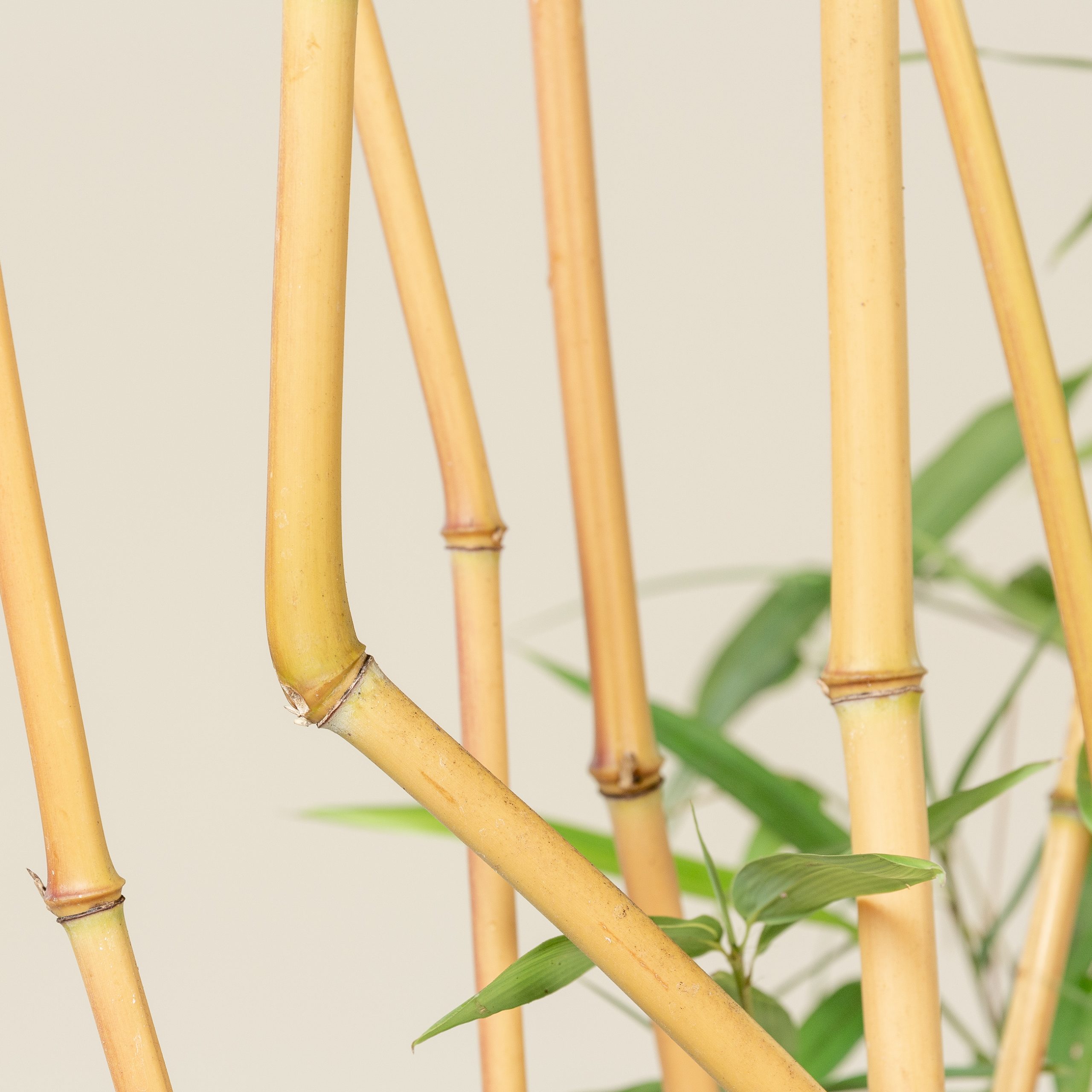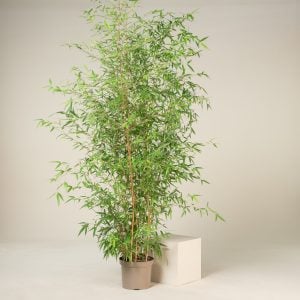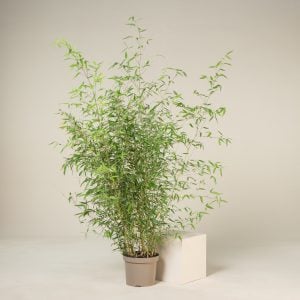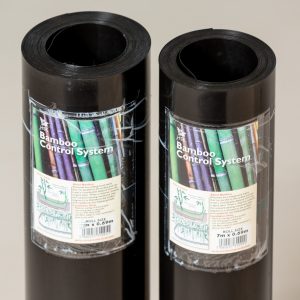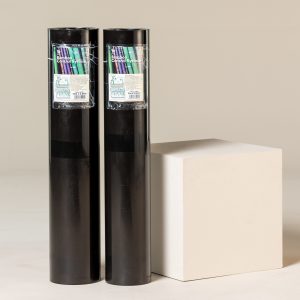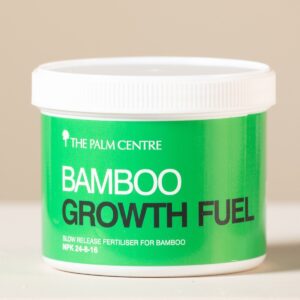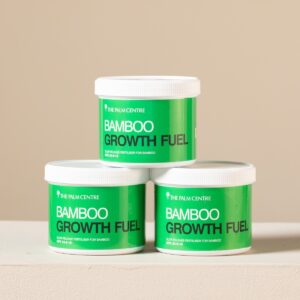Bamboo is a wonderful, fast growing grass that will create an instant backdrop in your garden, a privacy screen or a hedge. With its astonishing growth rate, bamboo effortlessly establishes itself as a natural canvas, creating an instant backdrop that can redefine the aesthetic of your outdoor space.
Whether you envision a private sanctuary, a protective privacy screen, or an elegant hedge, bamboo plants stand as versatile and resilient companions in the realm of gardening. In this blog post, we’ll delve into the art of bamboo plant care, unlocking the secrets to nurturing these graceful giants and harnessing their beauty to elevate your garden experience.
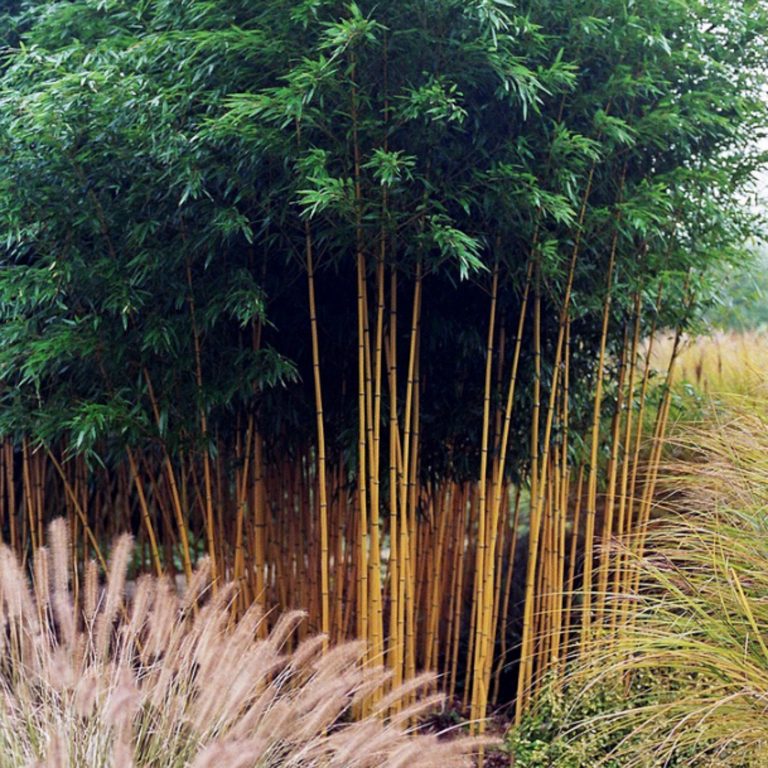
A very adaptable plant
Bamboos, resilient and adaptable, present an intriguing opportunity for cultivation in a variety of environments. These hardy plants have the remarkable ability to thrive in a wide range of locations, making them accessible to gardeners around the world. However, a note of caution is sounded against excessively windy locations, where the delicate fronds may be susceptible to damage. While bamboos can demonstrate their resilience in the face of diverse conditions, it’s important to strike a balance in choosing the right environment.
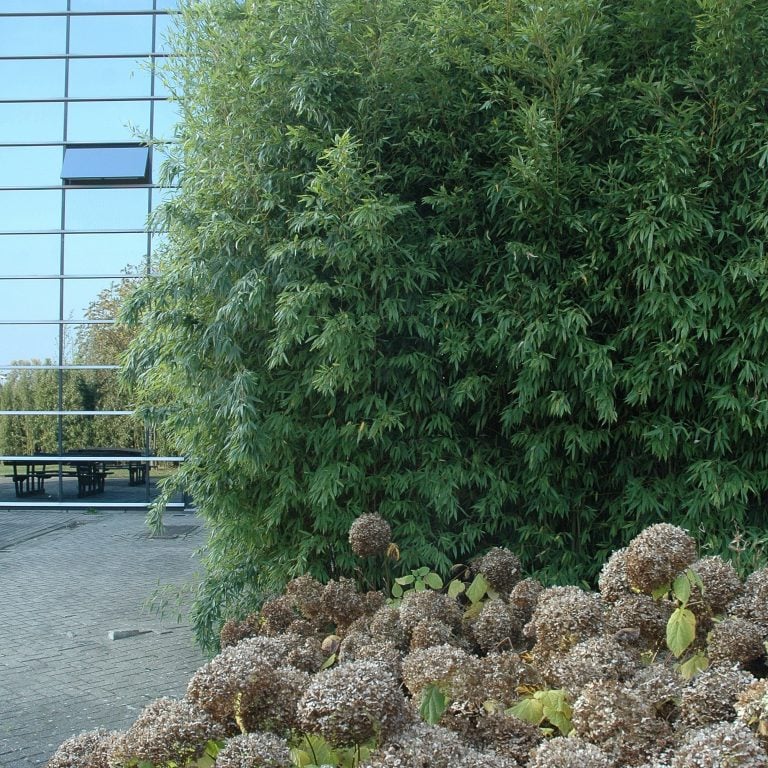
Positioning your plants
Whether your garden is bathed in sunlight or adorned with dappled shade, bamboo plants can find a place to call home. The play of sunlight, in particular, can influence the vibrant hues of these elegant grasses, with many varieties showcasing their most vivid colours when basking in the sun’s rays. While some species may lean towards a preference for sunlight, it’s worth noting that the nuanced needs of individual bamboo types may vary.
To embark on a successful bamboo cultivation journey, it’s advisable to consult the specific care recommendations for each species. Understanding the unique characteristics of the bamboo variant you choose will empower you to provide the optimal conditions for its growth and development. Join us as we unravel the intricacies of bamboo plant care, delving into the nuances that will enable you to harness the full potential of these versatile and enchanting additions to your garden.
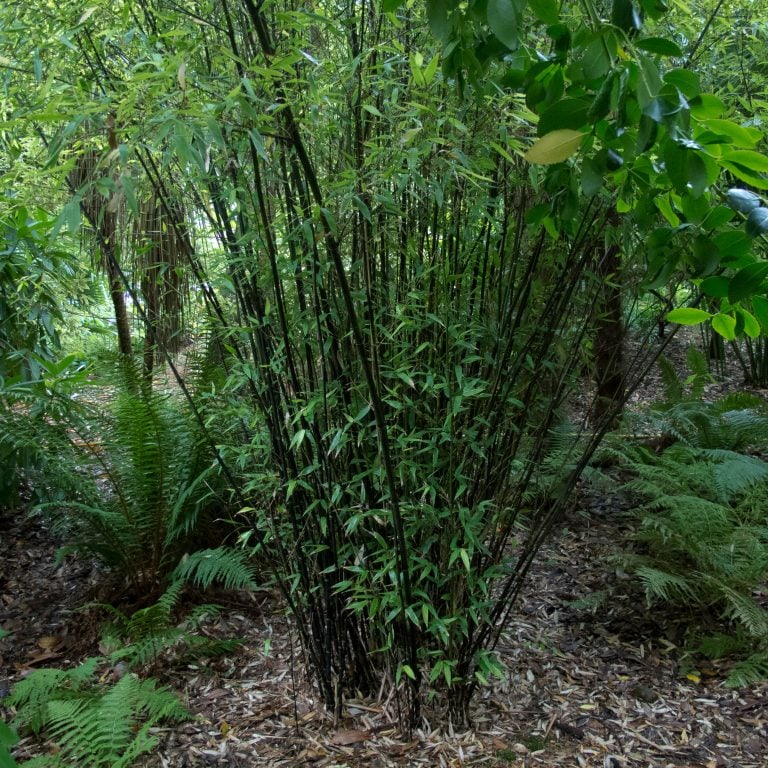
Soil
Bamboos are generally shallow rooted and prefer a rich, moisture retentive, organic soil.
They will usually tolerate most soils except the shallowest chalk (addition of organic matter will help) often adapting to drier conditions by producing shorter, stockier growth.
Very few bamboos enjoy waterlogged conditions, therefore it’s best to make sure your soil drains fast and the pots have drainage holes.
Watering
Bamboos have a definite seasonal growth cycle and it is important to keep in step with this for optimum care.
New canes (culms) emerge from the rhizome in spring. At this point they need water – and lots of it! – to pump up those canes and help them reach for the sky. Individual clumps can best be watered with a hose pipe; hedges by the simple installation of some ‘leaky hose’ laid along the hedge and connected at low pressure for a few hours (or overnight) to an outdoor tap.
Drought at this time can lead to canes aborting.
Once at full height the new canes open their branches and then their leaves: once this has happened the plant begins to grow its rhizome and this is the time to feed.
Especially during dry periods watering should be done often. Abundant watering from time to time is better than a little water every day.
Expert Tip
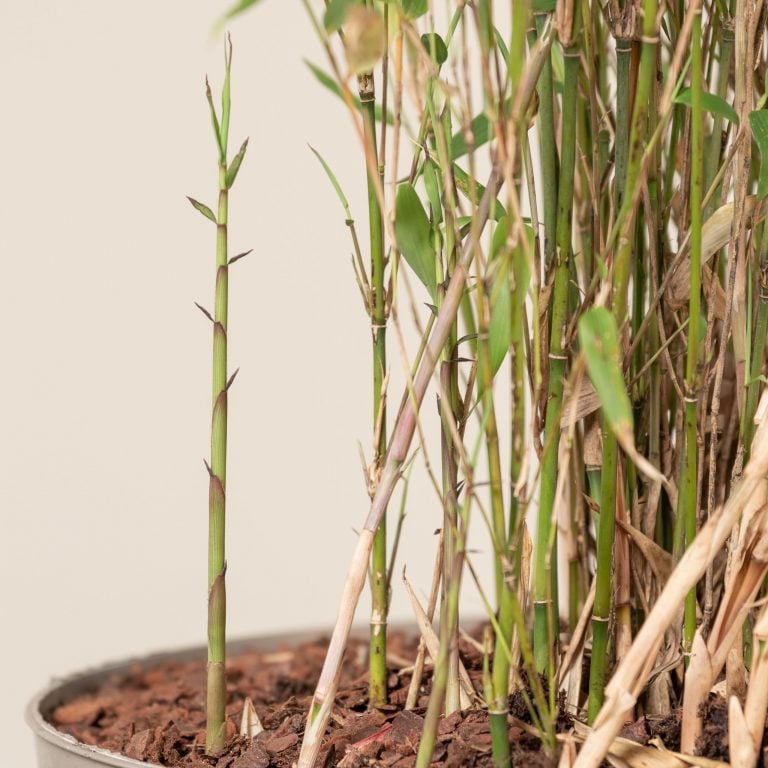
Growth
Most bamboo species have new shoots emerging from April to July and these shoots already have the same girth as they will have two months later when they have grown out to mature culms with full height.
After growing to full height, the culms develop branches and leaves but don’t increase in girth or height. Next year’s culms can grow higher and thicker until the plant reaches maturity.
Running bamboos start growing their horizontal rootstocks, or rhizomes, in late summer. They grow about 3-5 feet (1-1.5 metres) a year. If planted too close together, the growth rate might slow down due to competition for sunlight.
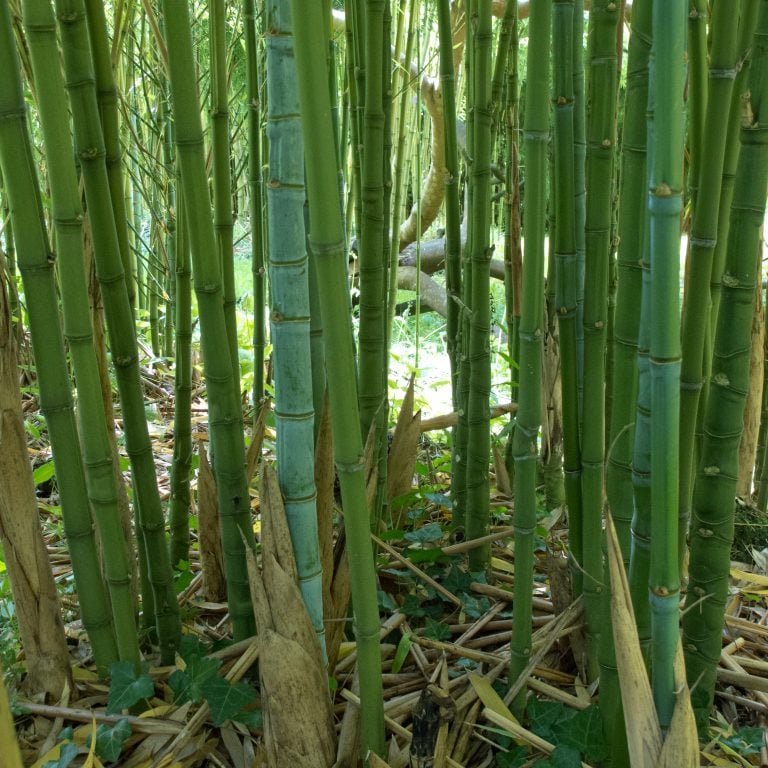
Pruning
Initially your bamboo will be in its juvenile phase: existing canes don’t get any taller or thicker but, with good care, successive years’ canes will increase in size until the clump reaches maturity, usually around 10 years or so.
Because bamboo cannot regain the lost height, it will get bushier in response to the pruning. Just be sure to leave some branches on the cane, otherwise the individual cane will die back to ground level.
Remember that each species has a maximum cane girth at maturity. For bamboos with colourful canes e.g. Phyllostachys, many growers prune away the lowest side branches to expose the thick lower canes.
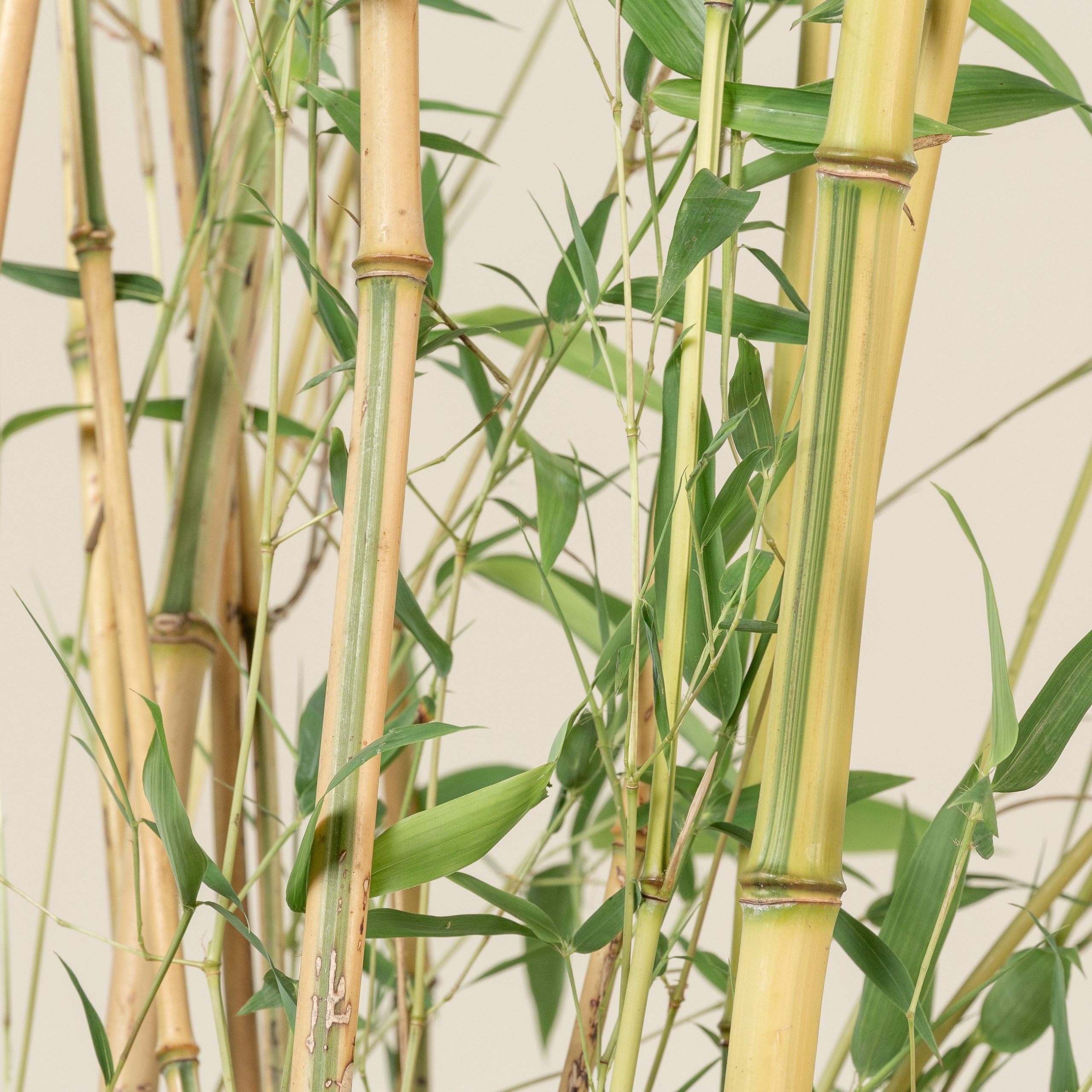
Pruning for girth
Once your bamboo is established, perhaps in its second or third year after planting, any unwanted new canes can simply be cut off at ground level as soon as the new shoots appear in spring.
To grow the most impressive canes, select the 2 or 3 thickest of the new shoots in spring and break off all the others. If this is repeated over a few years, culms of the biggest dimensions can be produced.
Feeding
Bamboos are grasses, so appreciate a feed high in nitrogen – we recommend using The Palm Centre Slow Release Bamboo Fertiliser (one application lasts up to 6 months), but also lawn feed (but not feed and weed!), fish blood & bone or, indeed, any garden plant fertiliser is better than none.
Apply generously in spring-summer, water in and, importantly, apply a thick organic mulch around the base of the culms.
Follow the application rate specified on the fertilizer package. Over fertilizing bamboo is difficult to do, but excessive amounts of nitrogen can lead to aphid problems or weakened canes.
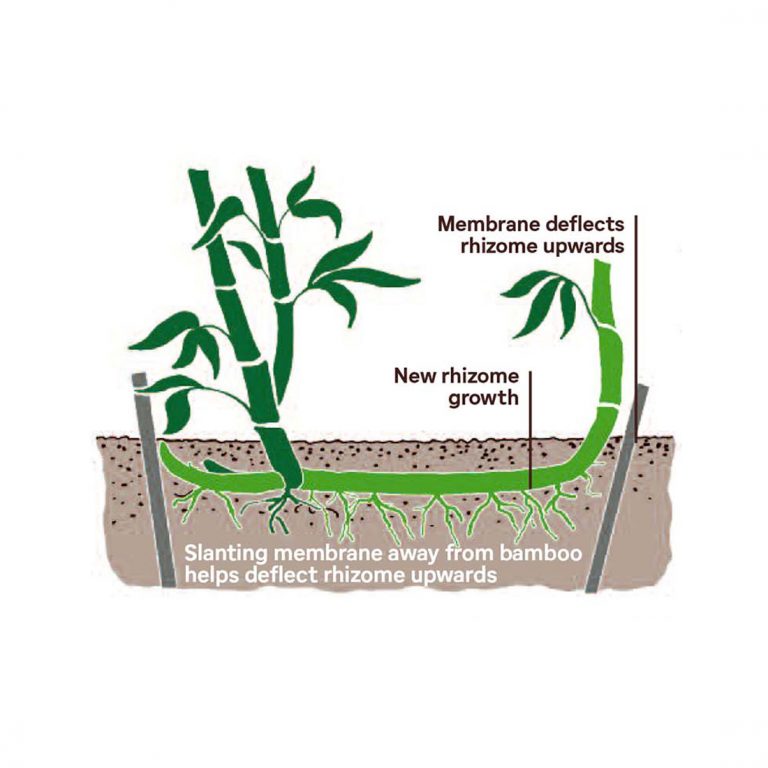
Root control
Clump forming bamboos don’t require root containment. Bamboos with running rhizomes must be planted with a root control system (root barrier).
Dig a trench about 23”/60 cm deep around the plant at an appropriate distance from it, with the depth slightly less than the barrier so it sticks up about 10 cm above soil level. Install the barrier so that the ends overlap and fold it back on itself like 2 interlocking hooks.
Planting bamboo
Before planting out, the roots should be soaked in water for some time, and after planting it is important that the plant is watered well. The roots should never dry out. Once the plant has rooted well it is much less vulnerable, although it still likes to be watered regularly.
Plants that leave the nursery green and healthy and then turn brown within a couple of weeks have nearly always suffered from dehydration.
When is the best time to plant?
It’s best to plant late in autumn, or early spring but hardy species of bamboo which were grown in pots can be planted anytime during the year, except in frozen ground.
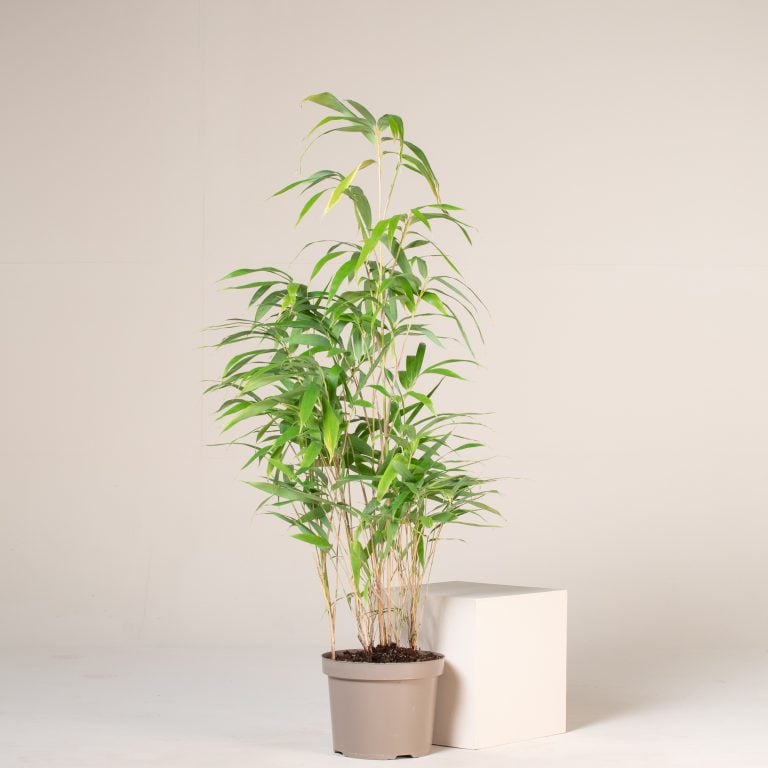
How many do I need?
Planting density depends a lot on the type of bamboo you’re planting, but a general rule, considering a 12 litre pot, is one plant per metre or 3 plants per 2 linear metres.
If you have little patience and you need an instant effect, then 2 plants per metre. The bamboo must be planted slightly lower than the surrounding ground.
Consider more plants per linear metre in case of clump forming bamboo species.
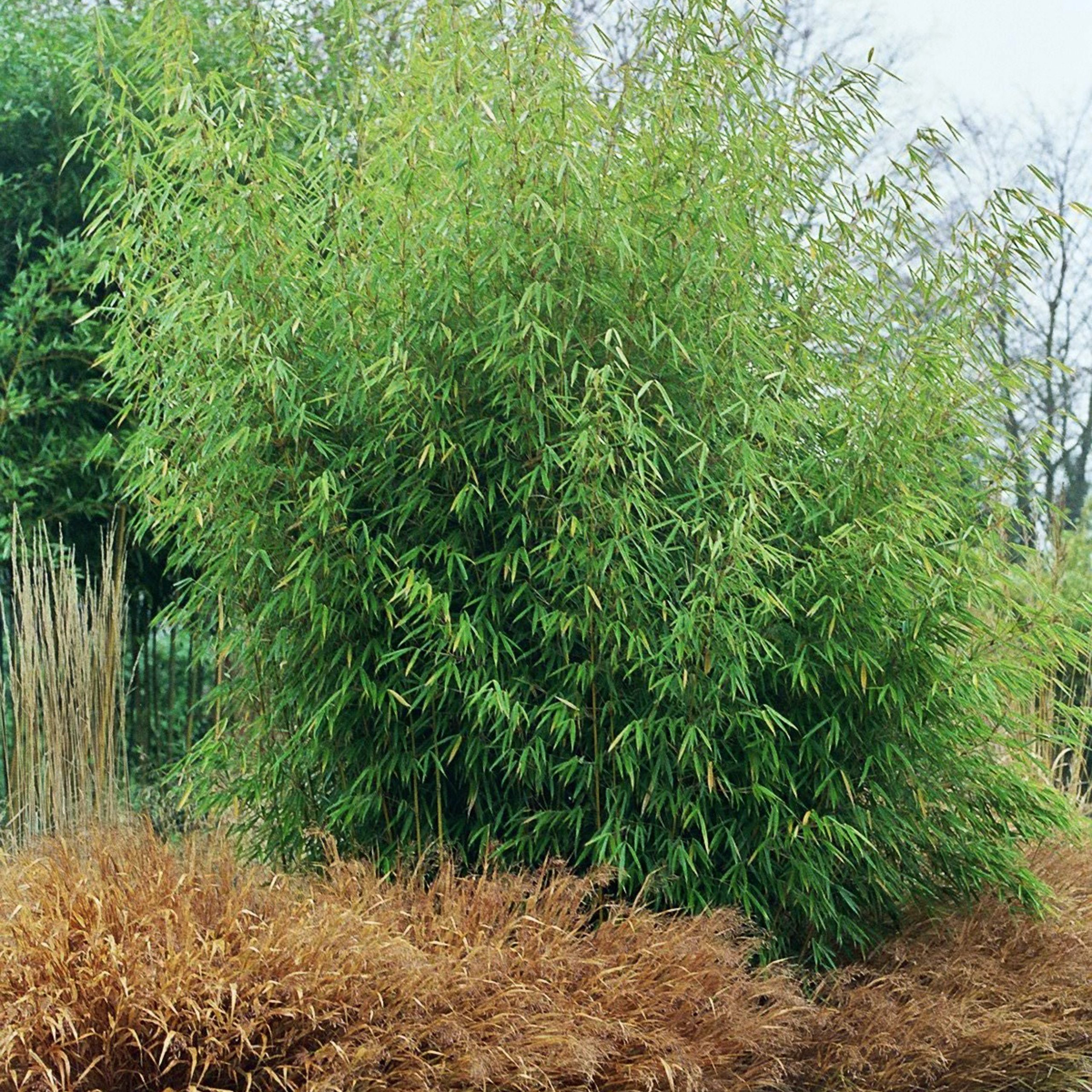
Dividing the clumps
Most bamboos can be split after a few years. Simply cut the clump in two with a spade and relocate the new plants.
Divide in mid-spring, splitting clumps apart with a mattock or axe, or lifting smaller clumps and dividing them with a saw. Rhizome cuttings can be taken in early spring;
Choose one, at most two year old canes and cut the soil away from around the plant. Cut the rhizomes from the main plant.
Read more about bamboo
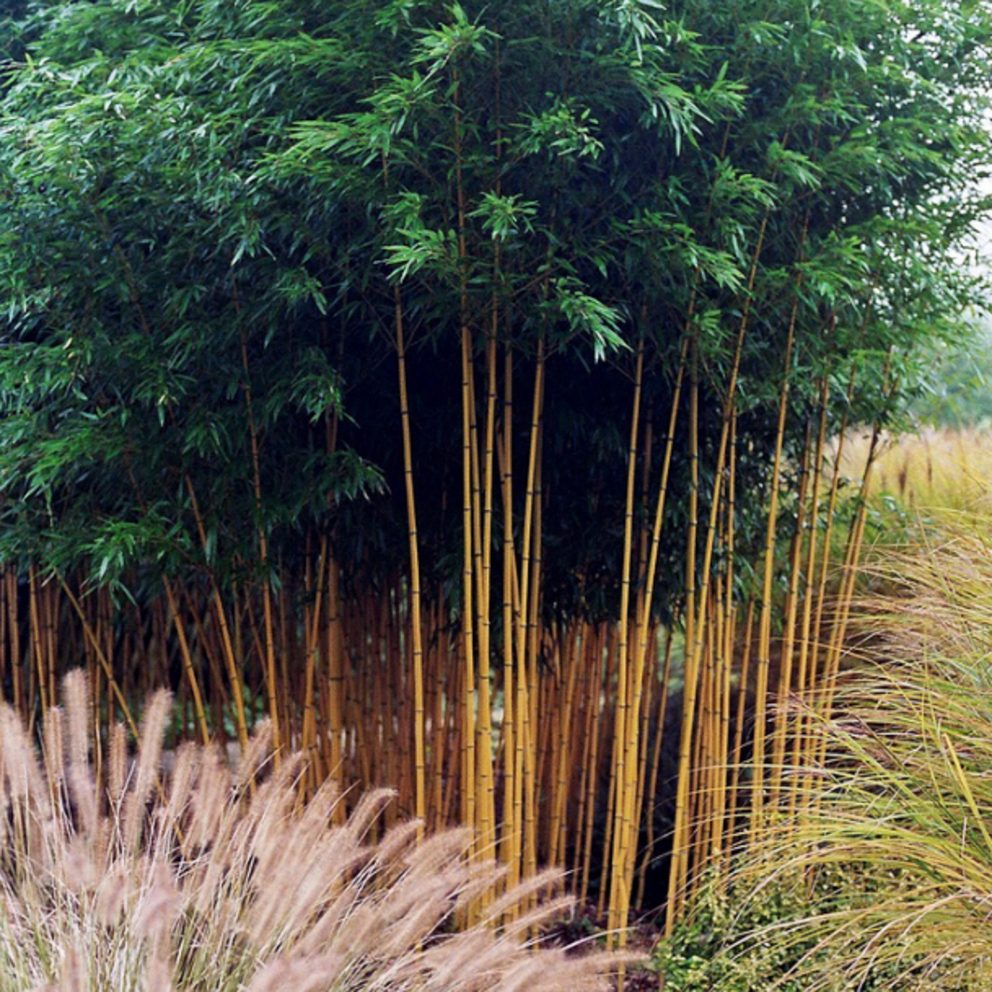
All about Phyllostachys
Bamboo is a versatile and attractive plant that can be used for a variety of purposes, including as a privacy screen, windbreak, or simply for its aesthetic appeal. Phyllostachys bamboo which is known as a running bamboo, is a popular choice for planting in the ground due to its fast growth rate and ability to form dense clumps.
Read articleMore questions?
See our Frequently Asked Questions section about bamboo
